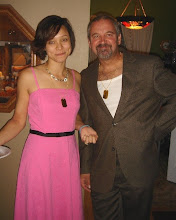 WARNING! USED ELECTOLYTE CONTAINS HEXAVALENT CHROMIUM. Protect yourself! Go to the OSHA website below and read. http://www.osha.gov/SLTC/hexavalentchromium/index.html
WARNING! USED ELECTOLYTE CONTAINS HEXAVALENT CHROMIUM. Protect yourself! Go to the OSHA website below and read. http://www.osha.gov/SLTC/hexavalentchromium/index.htmlFriday, July 4, 2008
History of the "Hydrogen Beast"
 WARNING! USED ELECTOLYTE CONTAINS HEXAVALENT CHROMIUM. Protect yourself! Go to the OSHA website below and read. http://www.osha.gov/SLTC/hexavalentchromium/index.html
WARNING! USED ELECTOLYTE CONTAINS HEXAVALENT CHROMIUM. Protect yourself! Go to the OSHA website below and read. http://www.osha.gov/SLTC/hexavalentchromium/index.htmlhttp://www.youtube.com/watch?v=z4F3D6A0W3k
It's only 1 minute 27 seconds long but good for a chuckle.
I originally built the 6 HP Escort as a test for an electric car conversion. I figured if a 6 HP gas engine could move a 2300# car, then an 8 HP electric motor would do very well for around
"Beast Cell" Developement
 (Click on any image to veiw larger than life).
(Click on any image to veiw larger than life).This is the first “Hydrogen Beast” cell core (left) next to the one I bought on the internet.
It has 500% more hydrogen generating area and draws 1/4th the amperage. The increased area comes from 2 additional neutral plates placed between the positive cylinder and the negative cylinder. This is a test cell to be used for measuring amperage draw and production within a stable temperature range. It is made from standard exhaust pipe which corrodes quickly but is fine for testing purposes and is cost effective to that end. Update: This cell served its purpose well. The data I collected is invaluable for the next generation of durable and reproducible results. It has been scraped, however, for a new more efficient Stainless steel model. Stay tuned for test results of the new final build of the “Hydrogen Beast” cell. It will be the most efficient cell possible with the most easily obtainable materials
Thursday, July 3, 2008
Beast Cell Developement - 2


Electrolyte selection: (Upper) The electrolyte arrived and I wasted no time testing. The Winner was the Lithium Hydroxide as far as electrical conductivity goes. However, It was hard to get to go into solution. It beat out the Potassium Hydroxide by only 200 ohms. Here are the results:
Sodium Bicarbonate - 20,000 Ohms
Vinegar - 10,000 Ohms
Sodium Hydroxide - 2500 Ohms
Potassium Hydroxide - 2200 Ohms
Lithium Hydroxide - 2000 Ohms.
You would think with those resistance numbers that Hydroxy would be pouring off the cell. Especially, since I obtained 4/L/M with a smaller cell and Sodium Bicarbonate in full solution. Well, It didn't. Although, at first it looked like Lithium Hydroxide would make a good electrolyte, I do not recommend it. It forms a salt at the bottom of the cell that builds up and shorts out the plates and it will not stay in solution well enough to support good conductivity.
(Lower) Warming up the cell with 36v: I only obtained 2/L/M with 9 amps with the Lithium. That calculates out to be 79% efficient. The strange thing is, after I pulled power from the cell, it kept producing Hydrogen for 10 minutes. So if I had stored and measured that after flow, efficiency would be higher. As it turns out, this is a known phenomenon for Joe Cell technology. With the new Stainless Steel cell and Potassium Hydroxide we will see much better results, I am sure.




